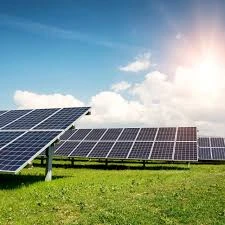fitting solar panels to roof
Fitting Solar Panels to Your Roof A Comprehensive Guide
As we continue to grapple with the increasing impacts of climate change and the need for renewable energy sources, solar power has emerged as a leading solution for both individual households and larger corporations. Fitting solar panels to your roof not only contributes to a sustainable environment but can also significantly reduce your energy bills. This article explores the essential factors to consider when fitting solar panels to your roof.
Understanding Solar Panel Technology
Solar panels, also known as photovoltaic (PV) panels, convert sunlight into electricity, which can be used to power your home. These panels consist of numerous photovoltaic cells that capture sunlight and convert it into usable energy. There are various types of solar panels available on the market, including monocrystalline, polycrystalline, and thin-film panels, each with its own advantages and disadvantages.
Monocrystalline panels are known for their high efficiency and longevity but are typically more expensive. Polycrystalline panels are a more budget-friendly option, while thin-film panels, which are lightweight and versatile, often have lower efficiency rates. Understanding these differences is crucial in choosing the right panels for your specific needs.
Evaluating Your Roof for Solar Panel Installation
Before installation, it's essential to evaluate whether your roof is suitable for solar panels. Several factors will influence this decision
1. Roof Orientation and Angle Solar panels work best when they face south (in the Northern Hemisphere) or north (in the Southern Hemisphere). Additionally, a roof angle of 30 to 45 degrees is ideal for maximizing sunlight exposure. However, panels can be installed on roofs that are less than optimal with the right adjustments.
2. Roof Condition Ensure your roof is in good condition before installing solar panels. If your roof needs repairs or is nearing the end of its lifespan, it may be wise to address these issues before installation to avoid additional costs in the future.
3. Shading Tall trees, buildings, or other obstructions that cast shadows on your roof can significantly reduce the efficiency of solar panels. Performing a shading analysis can help identify potential issues and determine the best placement for your panels.
fitting solar panels to roof

4. Local Regulations and Permits Before proceeding with installation, research local regulations concerning solar panel installation. Some municipalities may have specific guidelines or restrictions that you must follow. Obtaining the necessary permits is crucial to ensure compliance with local codes.
Choosing a Solar Installation Company
Once you've confirmed that your roof is suitable for solar panel installation, the next step is to choose a reliable solar installation company. Look for companies that are licensed, insured, and have a good reputation in the community. Reading customer reviews and asking for references can help you make an informed decision.
Furthermore, obtain multiple quotes and compare the services offered. A reputable company will conduct an on-site evaluation of your property, provide a comprehensive estimate, and explain the installation process in detail.
Installation Process
The installation of solar panels generally takes one to three days, depending on the size of the system. During the installation, your contractor will mount the panels, connect them to the electrical system, and ensure everything is properly wired. After installation, the system will be inspected to ensure it meets safety standards.
The Financial Benefits
Fitting solar panels to your roof can provide considerable financial benefits. While the initial investment may be substantial, various incentives such as tax credits and rebates can help offset these costs. Moreover, solar panels can increase the value of your home and provide significant savings on your monthly electricity bills.
In summary, fitting solar panels to your roof is a worthwhile investment in both sustainability and financial savings. By understanding the technology, evaluating your roof's suitability, choosing the right installation company, and navigating the installation process, you can harness the power of the sun to benefit your home and the environment. Transitioning to solar energy is not just a personal choice; it's a step toward a brighter, cleaner future for all.
-
String Solar Inverter: The High-Efficiency Solution for Smart Solar EnergyNewsJul.14,2025
-
Revolutionizing Rooftop Energy with the Power of the Micro Solar InverterNewsJul.14,2025
-
Power Independence with Smart Off Grid Solar Inverter SolutionsNewsJul.14,2025
-
On Grid Solar Inverter: Powering the Future with Smart Grid IntegrationNewsJul.14,2025
-
Monocrystalline Solar Panels: High-Efficiency Power for the Future of Clean EnergyNewsJul.14,2025
-
Bifacial Solar Panel: A Smarter Investment for Next-Generation Energy SystemsNewsJul.14,2025







